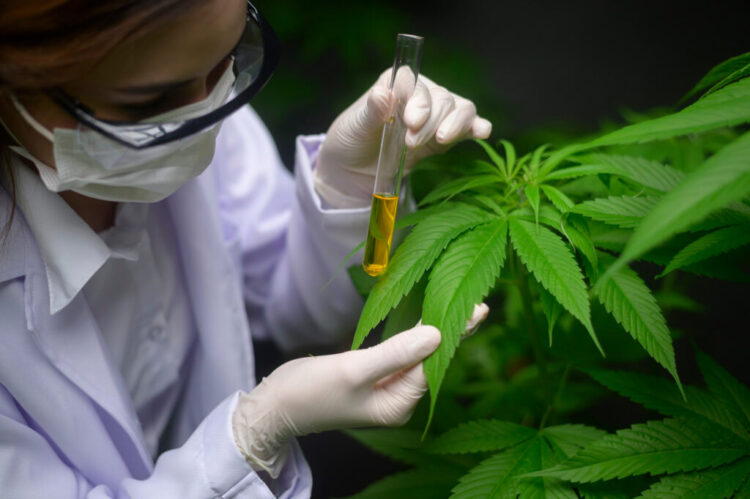In recent years, the role of cannabis in modern medicine has garnered significant attention from both the medical community and the public. This ancient plant, long associated with recreational use, is now being re-evaluated for its therapeutic potential in treating various medical conditions.
With ongoing research and clinical trials, the medical applications of cannabis are rapidly expanding, offering new hope and solutions for patients worldwide.
This article delves into understanding the significance of cannabis in modern medicine.
The Evolution of Cannabis in Medicine
Historically, cannabis has been used for medicinal purposes for thousands of years. Ancient texts from countries like China, India, and Egypt document its use in treating pain, inflammation, and neurological disorders. However, the 20th century saw a shift in perception, with cannabis becoming stigmatized and illegal in many parts of the world. This change significantly hindered scientific research and understanding of its medical benefits.
In recent decades, this trend has reversed.
Legalization movements across the globe, particularly in the United States, have opened the door for renewed research into cannabis.
This resurgence of interest has led to important discoveries about the plant’s compounds, particularly cannabinoids like THC (tetrahydrocannabinol) and CBD (cannabidiol), and their effects on the human body.
For this reason, the legalization and acceptance of medical cannabis have led to innovative solutions like weed delivery services. These services enhance patient access to medical cannabis, especially for those with mobility issues or living in areas with limited dispensary options. The weed delivery benefits extend beyond convenience, providing a discreet and secure way for patients to obtain their medication.
The Therapeutic Potential of Cannabis

Cannabis contains over a hundred cannabinoids, each with unique properties and potential therapeutic benefits. The two most studied cannabinoids are THC and CBD. THC is known for its psychoactive effects, while CBD is non-psychoactive and has been the focus of much medical research. Some therapeutic potentials of cannabis include:
Pain Management
One of the most common uses of medical cannabis is for pain relief. It has been shown that cannabinoids can effectively reduce chronic pain, making it a viable alternative to traditional painkillers, which often have significant side effects and addiction risks.
Mental Health Treatment
Cannabis is also being explored as a treatment for mental health disorders. It has been said that cannabis may help alleviate symptoms of anxiety, depression, and PTSD. However, it’s crucial to balance its use with potential risks, as THC can also exacerbate certain mental health conditions.
Neurological and Movement Disorders
There is growing evidence that cannabis can benefit patients with neurological and movement disorders. This includes conditions like multiple sclerosis, epilepsy, and Parkinson’s disease. CBD, in particular, has shown promise in reducing seizures in certain forms of epilepsy.
Oncology and Cannabis
In the field of oncology, cannabis has been studied for its ability to alleviate chemotherapy side effects such as nausea, vomiting, and loss of appetite. There is also ongoing research into its potential anti-cancer properties.
Challenges and Controversies

The integration of cannabis into modern medicine is fraught with challenges and controversies, primarily centered around the necessity for more robust and standardized research. This research gap stems from a historical lack of scientific study due to legal and societal stigma.
Additionally, the cannabis plant exhibits a wide variability in its strains, each with distinct effects and medicinal benefits, which complicates clinical understanding.
A significant concern is the potential for long-term use and dependency, which remains a contentious topic in medical and public health circles. This complex landscape requires careful navigation to balance potential benefits against risks.
Regulatory and Legal Hurdles
Navigating the regulatory and legal landscape of cannabis is a major hurdle in its medical
application. The legal status of cannabis is a complex tapestry that varies not only internationally but also within individual U.S. states. This inconsistency poses significant challenges for patients seeking access and researchers striving to conduct comprehensive clinical studies.
Legal restrictions can impede the availability of quality cannabis for research, resulting in a scarcity of data on its long-term effects and therapeutic potential. These legal barriers also limit patient access to cannabis-based treatments, impacting their healthcare choices and quality of life.
Dosage and Standardization

The challenge of dosage and standardization of cannabis-based medications is a significant barrier to its acceptance in mainstream medicine. Unlike traditional pharmaceuticals, which have precise, consistent dosages, cannabis products exhibit wide variations in potency and chemical composition. This inconsistency complicates the development of standardized dosing guidelines, which are essential for ensuring patient safety and treatment efficacy.
The lack of standardization can lead to unpredictable therapeutic outcomes and difficulty replicating successful treatments. Addressing this challenge is crucial for the safe integration of cannabis into medical practice and for gaining the trust of the medical community and patients.
Conclusion
The significance of cannabis in modern medicine cannot be overstated. As research sheds light on its therapeutic potential, it is becoming an increasingly important tool in the medical arsenal. However, ongoing research, education, and regulatory adjustments are necessary to fully realize its benefits and mitigate risks.
The future of cannabis in medicine looks promising, offering new avenues for treatment and improving the quality of life for patients around the world.
 Hi Boox Popular Magazine 2024
Hi Boox Popular Magazine 2024



